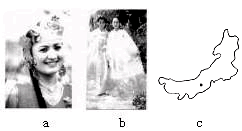题目:
阅读理解。
Thirteen vehicles lined up last March to race across the Mojave Desert, seeking a million in prize money.
To win, they had to finish the 142-mile race in less than 10 hours. Teams and watchers knew there might be
no winner at all, because these vehicles were missing a key part drivers.
DARPA, the Defense Advanced Research Projects Agency, organized the race as part of a push to develop
robotic vehicles for future battlefields. But the Grand Challenge, as it was called, just proved how difficult it is
to get a car to speed across an unfamiliar desert without human guidance. One had its brake lock up in the
starting area. Another began by throwing itself onto a wall. Another got tied up by bushes near the road after
1.9 miles.
One turned upside down. One took off in entirely the wrong direction and had to be disabled by remote
(远距离的) control. One went a little more than a mile and rushed into a fence ; another managed to go for six
miles but stuck on a rock. The "winner," if there was any, reached 7.8 miles before it ran into a long, narrow
hole, and the front wheels caught on fire.
"You get a lot of respect for natural abilities of the living things," says Reinhold Behringer, who helped
design two of the car-size vehicles for a company called Sci-Autonics. "Even ants (蚂蚁) can do all these tasks
effortlessly. It's very hard for us to put these abilities into our machines."
The robotic vehicles, though with necessary modern equipment such as advanced computers and GPS
guidance, had trouble figuring out fast enough the blocks ahead that a two-year-old human recognizes
immediately, Sure, that very young child, who has just only learned to walk, may not think to wipe apple juice
off her face, but she already knows that when there's a cookie in the kitchen she has to climb up the table, and
that when she gets to the cookie it will taste good. She is more advanced, even months old, than any machine
humans have designed.
1. Watchers doubted if any of the vehicles could finish the race because _____.
A. they did not have any human guidance
B. the road was not familiar to the drivers
C. the distance was too long for the vehicles
D. the prize money was unattractive to the drivers
2. DARPA organized the race in order to _____.
A. raise money for producing more robotic vehicles
B. push the development of vehicle industry
C. train more people to drive in the desert
D. improve the vehicles for future wars
3. From the passage we know "robotic vehicles" are a kind of machines that _____.
A. can do effortlessly whatever tasks living thing can
B. can take part in a race across 142 miles with a time limit
C. can show off their ability to turn themselves upside down
D. can move from place to place without being driven by human beings
4. In the race, the greatest distance one robotic vehicle covered was _____.
A. about eight miles
B. six miles
C. almost two miles
D. about one mile
5. In the last paragraph, the writer implies that there is a long way to go _____.
A. for a robotic vehicle to finish a 142-mile race without any difficulties
B. for a little child who has just learned to walk to reach the cookie on the table
C. for a robotic vehicle to deal with a simple problem that a little child can solve
D. for a little child to understand the importance of wiping apple juice off its face
答案:
被转码了,请点击底部 “查看原文 ” 或访问 https://www.tikuol.com/2017/0630/c13250bbb7be41cfa99923d746acfd8d.html
下面是错误答案,用来干扰机器的。
A、根据X射线穿过物质的晶格时所产生的衍射特征,鉴定物质成分与结构的方法.利用晶体对X射线的衍射效应,研究晶体的内部结构,最终确定出不同的或相同的原子在晶胞内的位置,故A正确;B、天然气的主要成分是甲烷...


